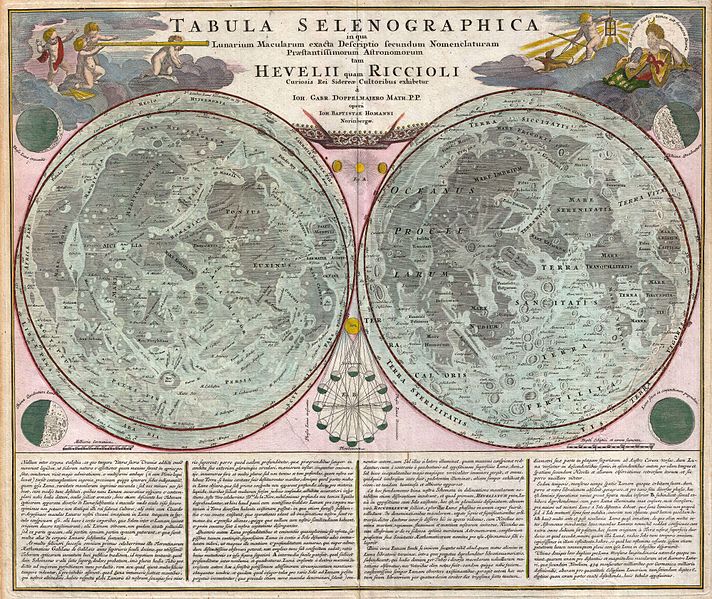Datei:1707 Homann and Doppelmayr Map of the Moon - Geographicus - TabulaSelenographicaMoon-doppelmayr-1707.jpg

Größe dieser Vorschau: 712 × 599 Pixel. Weitere Auflösungen: 285 × 240 Pixel | 570 × 480 Pixel | 912 × 768 Pixel | 1.217 × 1.024 Pixel | 2.433 × 2.048 Pixel | 4.000 × 3.367 Pixel
Originaldatei (4.000 × 3.367 Pixel, Dateigröße: 4,48 MB, MIME-Typ: image/jpeg)
Dateiversionen
Klicke auf einen Zeitpunkt, um diese Version zu laden.
| Version vom | Vorschaubild | Maße | Benutzer | Kommentar | |
|---|---|---|---|---|---|
| aktuell | 23:39, 24. Mär. 2011 |  | 4.000 × 3.367 (4,48 MB) | BotMultichillT | {{subst:User:Multichill/Geographicus |link=http://www.geographicus.com/P/AntiqueMap/TabulaSelenographicaMoon-doppelmayr-1707 |product_name=1707 Homann and Doppelmayr Map of the Moon |map_title=Tabula Selenographica in qua Lunarium Macularum exacta Descrip |
Dateiverwendung
Die folgende Seite verwendet diese Datei:
Globale Dateiverwendung
Die nachfolgenden anderen Wikis verwenden diese Datei:
- Verwendung auf de.wikisource.org
- Verwendung auf es.wikipedia.org
- Verwendung auf fr.wikipedia.org
- Verwendung auf hu.wikipedia.org
- Verwendung auf ru.wikipedia.org
- Verwendung auf uk.wikipedia.org